eira_barbara
Chirping
So we've just bought a new house in Minneapolis, and the previous owners kept poultry. I've been toying with the idea of keeping a few chickens for a couple of years now, and the itch to play with it and see if I like having them around won't go away, so... chickens. (Mostly, I want to watch them moving around the yard, eat eggs, turn fresh kitchen scraps into something useful, and maybe learn a new skill.)
That said: we're holding off for this year because of HPAI. I know I could get them anyway but look, it's going to come back up through the fall migration waterways, there's waterfowl everywhere up here, and it just seems better to wait a winter first. So my thought is this: that gives me a whole summer and fall to make sure that my setup is as low maintenance as possible before adding 3-4 large fowl pullet chicks in the spring. I'm not particularly handy, but my partner is, and I know how to follow instructions fairly well. The run is, er, falling down a bit right now, though the coop is in pretty good shape, assuming it's got sufficient space and ventilation. (Probably? I think there were nine hens and two ducks living there when the previous folks were there, with four half-grown pullets in the garage.)
Here's what I need, in descending order of importance:
Enough space to minimize stress assuming birds are in the run at all times.
I don't need or want to snuggle them much, and while I would like to give them some free range time, I also have two dogs. Maybe they will magically take to chickens and reliably not be a danger to them when unsupervised, and maybe I will also spontaneously grow fairy wings and a nice tiara. (They have a lot less prey drive than the Jack Russell terrors I grew up with, but that's a low bar.) While I'll be working with the dogs to minimize the risk, I would like to make sure I have space for a setup that works without relying on free range access so that the birds won't be too stressed if they wind up spending all their time in the run.
Enrichment ideas are also good--how high up would birds use perches or shelves, do you think? My partner has thoughts about seeing whether we could build something that uses vertical space to give the birds more room within the footprint of our yard, and while I think that sounds potentially useful for enrichment I don't want to put a lot of effort into something that they won't use. (T also would like to put in a catio for the indoor-only cats, whether or not the cats have a tunnel access to it, and is thinking along the lines of using space effectively as much as possible. Obviously the two species should have zero access to one another.)
Predator-safe containment.
Look, death is a part of life, but I would like to minimize my unexpected interactions with it as much as I can. We're in the middle of Minneapolis proper, and there's a one-lane alley that runs behind our garage where all the trash goes; I'd call it "residential urban." I have read some horror stories about raccoons grabbing chickens through chicken wire--which is most of what's on the run itself--and yanking outwards. What are the odds that this happens if I don't make sure that hardwire cloth replaces all that chicken wire?
A good balance between ventilation and warmth
One of the questions I have about the existing coop is that it looks like it might have been set up with much more ventilation and then haphazardly been filled with insulation/had one large window plywooded over because the original design got too cold. I'm a recent transplant to Minnesota from Texas, and while I've lived out one winter here now I am acutely aware that as far as winter conditions go there's still a lot for me to learn. I've been down south for fifteen years, and I'm still adjusting to the reality of winters.
Here's what I'd like:
Minimal daily maintenance and upkeep
I'm very interested in the deep litter/deep bedding methods I see people discussing. I have no idea what the previous methods were. The coop is full of dirty bedding, but that's frankly not unexpected; the previous folks were moving interstate with their own menageries and they seemed pretty time-crunched. I know myself: I would way rather deal with a yearly or quarterly clean-out weekend than reliably clear out muck daily. I would also like to minimize smell if I can, but I'm most concerned about health and welfare for the birds. What flooring works best for that?
Roof high enough to be walkable, at least the run.
Look, this thing is going to need some cleaning no matter what systems we use; I want to make sure that getting in there to clean, check that water is accessible, feed etc. doesn't completely suck. From experience contorting myself around behavioral chambers for rodents at work, that only happens when you design things with an eye towards being able to access them to maintain them.
Roofed run?
It seems like having roofing over the entire run would help give the chickens more space sheltered from some of the worst of the weather and minimize food waste, especially if I put food and water sources in the run rather than the coop. Currently, the previous folks seem to have draped some kind of corrugated plastic over the entire thing; I don't know if that's functional in any way or just a stopgap for HPAI protection. Hard to say. (That actually might be another argument for hardware cloth instead of wire: it'd be good to have a way to keep vermin from going in for scattered or wasted feed.) I don't think it's actually attached to anything.
Rainwater collection?
I have seen some interesting setups that use gutters around coops or runs that can then be directed to a reservoir that supplies the chickens with water. How feasible is that to build, do you think, and would it burst or be damaged by a frozen winter?
Here's what I got:
I've attached my best measurement of the area of the existing run; I think this comes to ~200 sq feet all told. The large box in the upper left is the coop with attached nesting boxes; the small box in the middle is a small square doghouse-type structure that I think must have been for the ducks; the small box in the lower left is a small compost bin that lives by the door out of the run. I'm planning to get rid of the duck house thing; I don't need or want waterfowl. It's fairly well built, so I'll probably offer it free to anyone who wants it on local facebook free exchanges and/or on Craigslist.
The coop is about 20sqft in footprint. I know the general recommendations are for 4sqft per bird in the coop and 10sqft in the run, and obviously the current dimensions are significantly bigger than that. I can't see myself wanting more than maybe six birds; I know chicken math is a thing but I am pretty good at saying "no" if I think additional animals are actually a bad idea.
Like I said, it looks to me like the existing coop (see the photos attached) was originally built with a lot more ventilation that turned out to be too cold and drafty in the winter. Is that okay? What kinds of bedding options do we have with this coop? The previous owners seem to have primarily used pine shavings. My sense is that the coop itself is probably fine, but a lot of the run is falling down a bit and might need some replacing.
We've talked about maybe using dog kennel panels to replace some of the run, which could give us a built in roof structure and a good surface for mounting hardware cloth onto. Or I could simply repair some of the things that are in the run as it is now, like the hole in the skirt of wood fencing half-filled by a rock (!) and the, uh, slightly disintegrating door.
Thoughts?
That said: we're holding off for this year because of HPAI. I know I could get them anyway but look, it's going to come back up through the fall migration waterways, there's waterfowl everywhere up here, and it just seems better to wait a winter first. So my thought is this: that gives me a whole summer and fall to make sure that my setup is as low maintenance as possible before adding 3-4 large fowl pullet chicks in the spring. I'm not particularly handy, but my partner is, and I know how to follow instructions fairly well. The run is, er, falling down a bit right now, though the coop is in pretty good shape, assuming it's got sufficient space and ventilation. (Probably? I think there were nine hens and two ducks living there when the previous folks were there, with four half-grown pullets in the garage.)
Here's what I need, in descending order of importance:
Enough space to minimize stress assuming birds are in the run at all times.
I don't need or want to snuggle them much, and while I would like to give them some free range time, I also have two dogs. Maybe they will magically take to chickens and reliably not be a danger to them when unsupervised, and maybe I will also spontaneously grow fairy wings and a nice tiara. (They have a lot less prey drive than the Jack Russell terrors I grew up with, but that's a low bar.) While I'll be working with the dogs to minimize the risk, I would like to make sure I have space for a setup that works without relying on free range access so that the birds won't be too stressed if they wind up spending all their time in the run.
Enrichment ideas are also good--how high up would birds use perches or shelves, do you think? My partner has thoughts about seeing whether we could build something that uses vertical space to give the birds more room within the footprint of our yard, and while I think that sounds potentially useful for enrichment I don't want to put a lot of effort into something that they won't use. (T also would like to put in a catio for the indoor-only cats, whether or not the cats have a tunnel access to it, and is thinking along the lines of using space effectively as much as possible. Obviously the two species should have zero access to one another.)
Predator-safe containment.
Look, death is a part of life, but I would like to minimize my unexpected interactions with it as much as I can. We're in the middle of Minneapolis proper, and there's a one-lane alley that runs behind our garage where all the trash goes; I'd call it "residential urban." I have read some horror stories about raccoons grabbing chickens through chicken wire--which is most of what's on the run itself--and yanking outwards. What are the odds that this happens if I don't make sure that hardwire cloth replaces all that chicken wire?
A good balance between ventilation and warmth
One of the questions I have about the existing coop is that it looks like it might have been set up with much more ventilation and then haphazardly been filled with insulation/had one large window plywooded over because the original design got too cold. I'm a recent transplant to Minnesota from Texas, and while I've lived out one winter here now I am acutely aware that as far as winter conditions go there's still a lot for me to learn. I've been down south for fifteen years, and I'm still adjusting to the reality of winters.
Here's what I'd like:
Minimal daily maintenance and upkeep
I'm very interested in the deep litter/deep bedding methods I see people discussing. I have no idea what the previous methods were. The coop is full of dirty bedding, but that's frankly not unexpected; the previous folks were moving interstate with their own menageries and they seemed pretty time-crunched. I know myself: I would way rather deal with a yearly or quarterly clean-out weekend than reliably clear out muck daily. I would also like to minimize smell if I can, but I'm most concerned about health and welfare for the birds. What flooring works best for that?
Roof high enough to be walkable, at least the run.
Look, this thing is going to need some cleaning no matter what systems we use; I want to make sure that getting in there to clean, check that water is accessible, feed etc. doesn't completely suck. From experience contorting myself around behavioral chambers for rodents at work, that only happens when you design things with an eye towards being able to access them to maintain them.
Roofed run?
It seems like having roofing over the entire run would help give the chickens more space sheltered from some of the worst of the weather and minimize food waste, especially if I put food and water sources in the run rather than the coop. Currently, the previous folks seem to have draped some kind of corrugated plastic over the entire thing; I don't know if that's functional in any way or just a stopgap for HPAI protection. Hard to say. (That actually might be another argument for hardware cloth instead of wire: it'd be good to have a way to keep vermin from going in for scattered or wasted feed.) I don't think it's actually attached to anything.
Rainwater collection?
I have seen some interesting setups that use gutters around coops or runs that can then be directed to a reservoir that supplies the chickens with water. How feasible is that to build, do you think, and would it burst or be damaged by a frozen winter?
Here's what I got:
I've attached my best measurement of the area of the existing run; I think this comes to ~200 sq feet all told. The large box in the upper left is the coop with attached nesting boxes; the small box in the middle is a small square doghouse-type structure that I think must have been for the ducks; the small box in the lower left is a small compost bin that lives by the door out of the run. I'm planning to get rid of the duck house thing; I don't need or want waterfowl. It's fairly well built, so I'll probably offer it free to anyone who wants it on local facebook free exchanges and/or on Craigslist.
The coop is about 20sqft in footprint. I know the general recommendations are for 4sqft per bird in the coop and 10sqft in the run, and obviously the current dimensions are significantly bigger than that. I can't see myself wanting more than maybe six birds; I know chicken math is a thing but I am pretty good at saying "no" if I think additional animals are actually a bad idea.
Like I said, it looks to me like the existing coop (see the photos attached) was originally built with a lot more ventilation that turned out to be too cold and drafty in the winter. Is that okay? What kinds of bedding options do we have with this coop? The previous owners seem to have primarily used pine shavings. My sense is that the coop itself is probably fine, but a lot of the run is falling down a bit and might need some replacing.
We've talked about maybe using dog kennel panels to replace some of the run, which could give us a built in roof structure and a good surface for mounting hardware cloth onto. Or I could simply repair some of the things that are in the run as it is now, like the hole in the skirt of wood fencing half-filled by a rock (!) and the, uh, slightly disintegrating door.
Thoughts?
Attachments
-
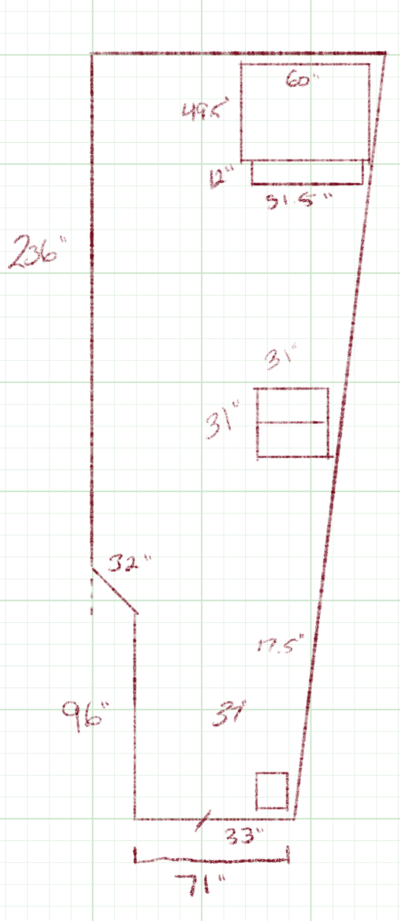 Untitled.png321.5 KB · Views: 52
Untitled.png321.5 KB · Views: 52 -
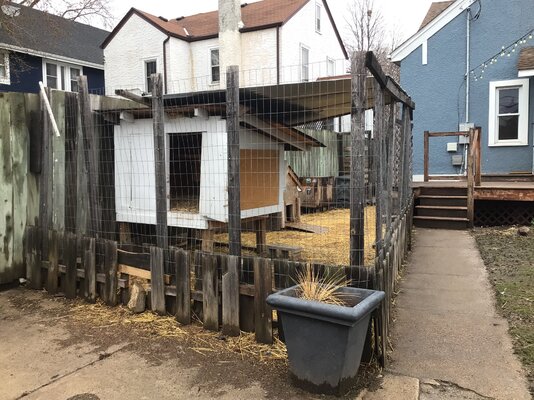 IMG_0131.jpg746.9 KB · Views: 24
IMG_0131.jpg746.9 KB · Views: 24 -
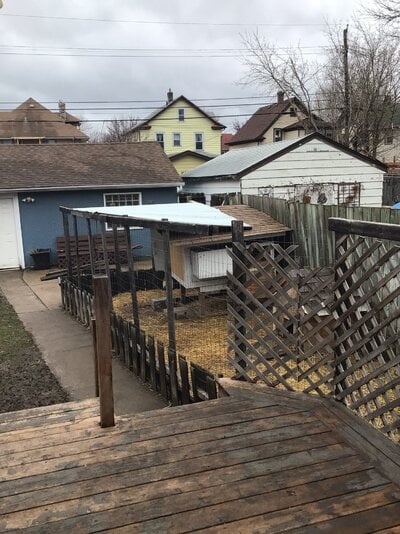 IMG_0128.jpg675.3 KB · Views: 25
IMG_0128.jpg675.3 KB · Views: 25 -
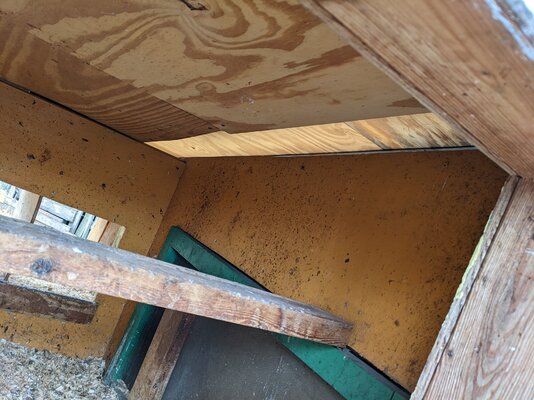 PXL_20220501_193313654.jpg538.6 KB · Views: 21
PXL_20220501_193313654.jpg538.6 KB · Views: 21 -
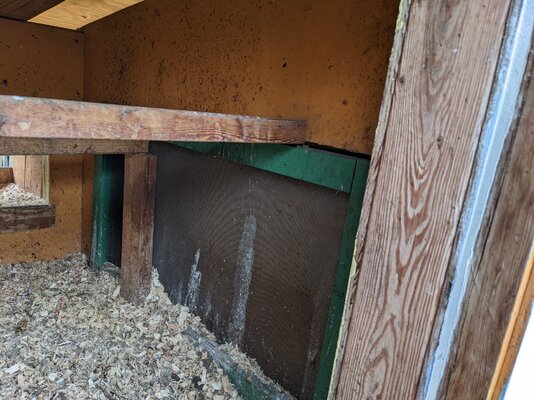 PXL_20220501_193316899.jpg674.2 KB · Views: 21
PXL_20220501_193316899.jpg674.2 KB · Views: 21 -
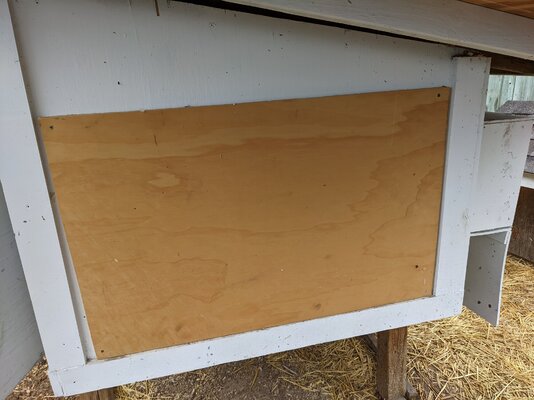 PXL_20220501_193323609.jpg414.2 KB · Views: 22
PXL_20220501_193323609.jpg414.2 KB · Views: 22 -
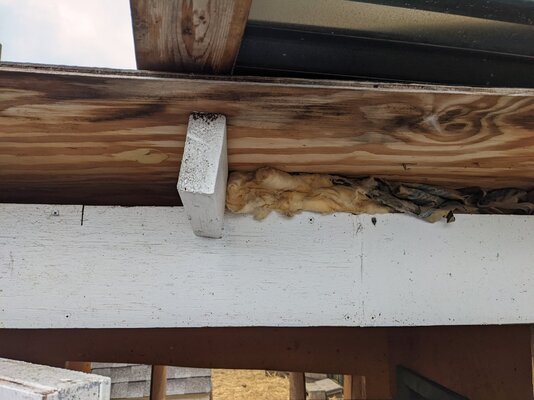 PXL_20220501_193302990.jpg425.4 KB · Views: 21
PXL_20220501_193302990.jpg425.4 KB · Views: 21 -
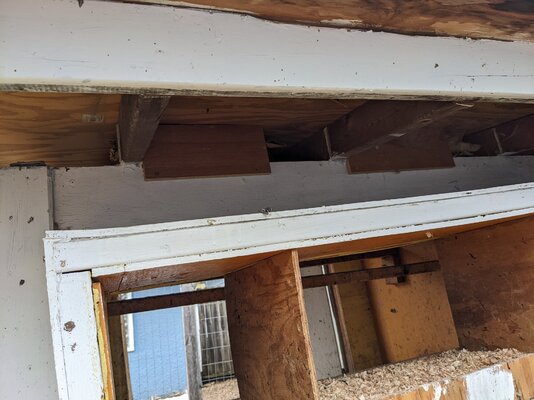 PXL_20220501_193648667.jpg436.1 KB · Views: 23
PXL_20220501_193648667.jpg436.1 KB · Views: 23 -
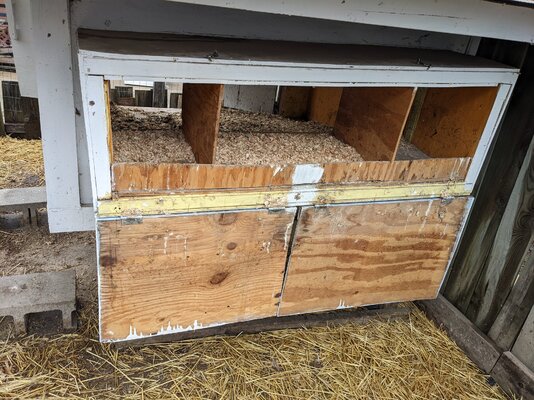 PXL_20220501_193340577.MP.jpg859.8 KB · Views: 24
PXL_20220501_193340577.MP.jpg859.8 KB · Views: 24
Last edited:



